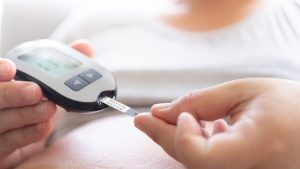Articles / New recommendations to improve diagnosis of rare diseases

It can be tempting to put rare diseases into the ‘too hard’ basket. Defined as a condition that affects less than 1 in 2,000 people, there are more than 7,000 known rare diseases, with that figure growing steadily.
Yet taken together, rare diseases are more common than type 2 diabetes. They affect 8% of Australians—or about 2 million people—and the average GP has 60-80 patients with a rare disease in their caseload.
Although each person’s experience of living with rare disease is unique, there are many shared challenges as highlighted in the Australian Government’s National Strategic Action Plan for Rare Diseases.
Health outcomes are currently poor: rare diseases account for around 60% of childhood deaths, and less than 5% of rare diseases currently have a curative treatment.
Rare diseases impact people’s social and emotional health and wellbeing, relationships, work and finances.
Most rare diseases do not have formal management guidelines, optimal therapies, or easily accessible information to refer to.
So it’s not surprising that many health professionals feel uncertain about how best to enable diagnosis and support, but last week the first-ever National Recommendations for Rare Disease Health Care launched to help rectify this.
The Recommendations outline very tangible things GPs and other health professionals can do to improve diagnosis and management.
In Australia, the average time to receive a diagnosis for a rare disease is five to seven years, but many patients can wait for more than a decade, if they ever receive one.
Four out of ten people living with rare diseases in Australia have reported seeing more than six doctors and receiving at least one misdiagnosis.
But there are several red flags that when seen together should alert to you consider whether the patient may have a rare disease, says Dr Elizabeth Palmer, Clinical Geneticist at Sydney Children’s Hospitals Network, lecturer at the University of New South Wales and leading co-author of the National Recommendations.
The ‘Family GENES’ mnemonic was first developed specifically for genetic conditions but can be adapted for other rare diseases. This framework highlights the importance of being open to possible connections between seemingly unrelated issues, Dr Palmer says.
Family history
Eighty percent of rare diseases have a genetic cause.
“Rare diseases aren’t always inherited or genetic. They can also include rare cancers, autoimmune conditions, and infections,” Dr Palmer explains.
“But if you see the same sort of symptoms popping up in many people in a family, that’s a red flag that this could be a genetic rare disease or inherited rare disease.”
Group of congenital anomalies
“If there’s a group of congenital anomalies, that’s another red flag.”
“If I see one congenital anomaly like an atrial septal defect, I’m very unlikely in isolation, to find that that’s a rare disease. But if I see an atrial septal defect, and a renal aplasia—so two completely different organ systems— that together is starting me to think that this could be a rare disease,” Dr Palmer says.
Extreme or exceptional presentations of common conditions
For example, that could be unusually severe reactions to an infection or metabolic stress, or early presentations of conditions you’d normally expect to see later in life.
“So if we’re seeing aortic dissection in a 20-year-old, that’s a red flag that could be Marfan Syndrome or another connective tissue condition,” for example, Dr Palmer says.
“Or, in the prenatal setting if a couple is having recurrent miscarriages, that would be a red flag for me that genetic investigations may be helpful to discuss with the couple, to see if there could be an underlying chromosomal difference.”
Neurodevelopmental delay or neurodegeneration
“So if a child is slower with their development, or particularly if they’re losing skills that they’ve had, that’s a really big red flag that this could be a genetic rare disease.”
Extreme or exceptional pathology
“Unusual histology findings and multiple or very early onset tumours such as pheochromocytomas, flexible neurofibromas, multiple exostosis, and childhood cancers are other pointers to the possibility of an underlying rare disease, for example a cancer predisposition syndrome.”
Surprisingly abnormal laboratory values
Markedly abnormal pathology results that don’t make sense are another red flag.
“Your suspicion for a rare disease should be heightened when you see a patient who has had multiple visits to different specialists without a diagnosis and a long ‘diagnostic odyssey,” Dr Palmer explains.
Any combination of these signs or symptoms can suggest that a rare disease may be underlying the condition.
Be honest about what you know and don’t know
People with rare diseases often have more knowledge about their condition than healthcare professionals, and they appreciate when clinicians acknowledge that and are open to their suggestions.
“It’s just not possible to be an expert in all rare conditions, or even to have heard of all rare diseases. But what people living with a rare disease have told us they really value, is when clinicians are honest and explicitly address uncertainty, and are open to finding out more about the condition and staying ‘on the journey’ with the patient,” Dr Palmer says.
Have clear referral pathways
“It can be hard for clinicians to know where to turn next, but the National Recommendations include reputable websites and resources, such as the new RARE Portal. The RARE Portal provides current, reliable information for clinicians, patients and researchers, including where to find ‘Centres of Expertise’ and patient advocacy groups—which are often important sources of expertise for health professionals as well as patients.”
Connecting people to research opportunities, including clinical trials, rare disease registries, patient advocacy groups, and new therapies and technologies, is essential. The National Recommendations provide advice on how to do this.
Regularly check in about mental wellbeing
“The psychosocial impacts of rare diseases are immense, and impact not only the person with a rare disease but also their family and support people,” Dr Palmer says.
A 2022 survey found nine out of 10 people living with a rare disease reported feeling anxious, stressed, or experiencing low mood. High rates of stigma, isolation, uncertainty, and negative educational and financial impacts were reported, leading to a high prevalence of mental health conditions. However, nearly 50% of surveyed people had never been asked about their mental health.
“People living with rare disease highlighted the need for mental health and wellbeing to be integrated into their care – they asked for clinicians to proactively ask about their mental health and wellbeing at each appointment, validate their emotional and psychological responses, signpost appropriate mental health and wellbeing information and supports and refer to additional specialist support where required.”
Use best-practice guidelines where possible
The Recommendations highlight where to find evidence-based management guidelines, with the RARE Portal being a great place to start.
Offer antenatal testing and screening to check for and manage risk factors, and genetic counselling for those with a family history of inherited conditions
The Recommendations discuss new options in carrier, reproductive and antenatal screening, as well as resources and genetic counselling services to facilitate shared decision making for these complex tests.
For more information contact Dr Palmer and the RArEST team at RAREST@unsw.edu.au and check out the RArEST webpage.
Rare Voices Australia, the national peak body for Australians living with rare disease, run the RARE Helpline – a new free service to answer questions that people living with rare disease and their clinicians often have.
The Rare Disease 101 Australia module is a series of free e-learning modules that are accredited for CPD points.

Managing Paediatric Anxiety in General Practice

OSA – Which Test for Which Patient

Musculoskeletal Health in Menopause

AHPRA-Proof Your Practice – Social Media Risks for GPs




Strongly agree
Somewhat agree
Neutral
Somewhat disagree
strongly disagree
Listen to expert interviews.
Click to open in a new tab
Browse the latest articles from Healthed.
Once you confirm you’ve read this article you can complete a Patient Case Review to earn 0.5 hours CPD in the Reviewing Performance (RP) category.
Select ‘Confirm & learn‘ when you have read this article in its entirety and you will be taken to begin your Patient Case Review.
Menopause and MHT
Multiple sclerosis vs antibody disease
Using SGLT2 to reduce cardiovascular death in T2D
Peripheral arterial disease
